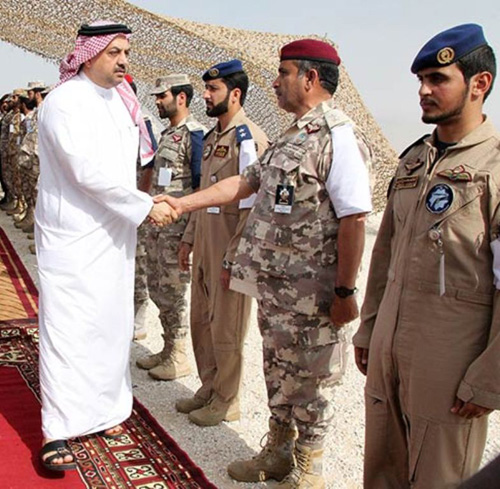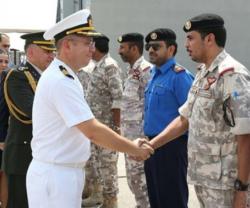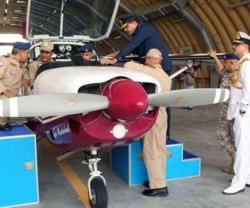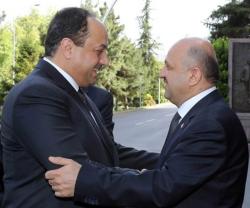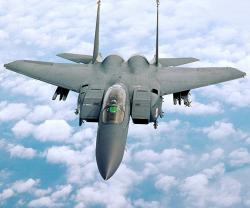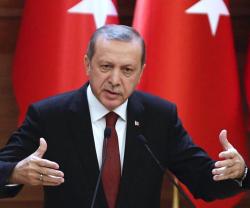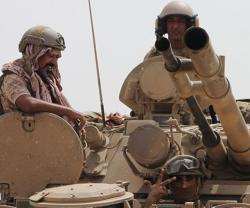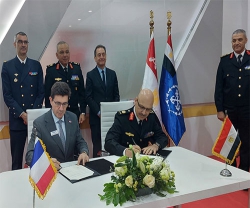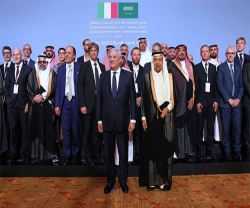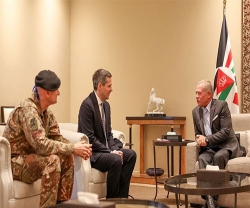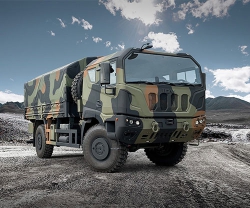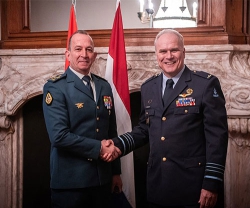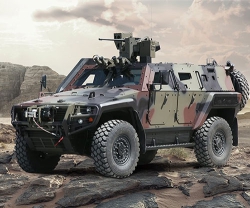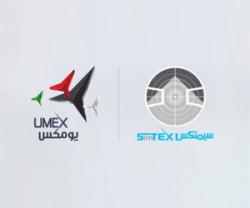The Qatari armed forces concluded last week the joint exercise Citadel 3 under the patronage and in the presence of Qatar’s Minister of State for Defense Affairs Dr. Khalid bin Mohammad Al Attiyah and the Chief-of-Staff Major General (Pilot) Ghanem bin Shaheen Al Ghanem, at Al Qalayel arena, Qatar News Agency (QNA) reported.
Citadel 3 is a tactical command center exercise, in which all the leaders and branches of the armed forces participate. It is a main exercise to conclude the training course of Qatari armed forces 2014-2017 and ran for 26 days through Tariq bin Ziyad and Al Qalayel battalions, in addition to several maritime areas.
The exercise is structured to accomplish the mission of the armed forces to defend the territory, airspace, and the territorial waters of the country, in addition to its vital economic and strategic facilities and infrastructure through repelling amphibious, air, land and ship interception operations.
The Director of the exercise, Marine Brigadier General Mubarak bin Rashid Al Sulaiti expressed his gratitude for the attendance of HE Minister of State for Defense Affairs Dr. Khalid bin Mohammad Al Attiyah and HE Chief of Staff Major General (Pilot) Ghanem bin Shaheen Al Ghanem to the final stage of Citadel 3, which was carried out with live ammunition.
Al Sulaiti said the exercise’s main aim is to improve the armed forces in all fields and continuous exercising enhances the fight efficiency of all leaders and units in the modern battle which requires a diversity of weapons and instruments to accomplish the mission through coordinating between forces and joint weapons.
Al Sulaiti added that Citadel 3 has been a successful end for the training course of 2014-2017 where the set goals have been achieved through intense training using the highest standards and the latest available techniques.
Citadel 3 is part of a series of training that are held every three years, adding that it complements the three-year training period, in which individual and joint trainings with other countries are carried out, he said.
He added that the exercise was divided into three stages; the first is dedicated to preparation and equipment and started on September 25 and concluded at the end of March 2017, the second stage is the actual exercise and started on April 2, and included the CPX command center exercise, tactical exercise sectors FTX and the final day, the third day covers a final summary, lessons learnt and a final report starting April 26 till May 4.
Al Sulaiti said the air, land and naval forces, Special Forces and military police participated in the exercises. They were joined by border protection, signal, information technology, maintenance, engineers, intelligence and security unit, medical services, supply and processing authority, directorate of protocol, public relations, moral guidance, military training, national defense center, crisis management, joint operations. From outside the armed forces, the Emiri Guard and the General Directorate of Coasts and Borders Security also participated in the exercise, he said.
Commander of the joint-forces in the exercise Colonel Rajeh Mohammed Aqil Al Nabat, said that Citadel 3 takes place every three years with all branches of the armed forces participating. The exercise aims to help the participating forces practice making the right decision at the right moment. It also trains them to deal with any unexpected target during operations. Citadel 3 also helps the different forces coordinate and plan together. He added that the exercise is an implementation of what has been practiced during the training period of three years, and trains the forces to deal with and prevent any infiltration or smuggling processes.
Al Nabat added that the exercise aimed to activate the centers of air, sea and infantry operations and the development of dilemmas and test their effectiveness and the development of alternative plans to address any emergencies that may occur during confrontations as well as the readiness of the forces.
He noted that the final training simulation consisted of two phases. The first phase involved the forces defending the North-Eastern zone. The second stage saw that defense turn into a counterattack the simulation included paratroopers, Dassault Mirage 2000, Alpha Jet, PZH 2000 which is the most modern propelled howitzer with a 60-km range. The state-of-the-art battle tank Leopard 2 A7+ was also part of the exercise. The simulation concluded using light weapons and infantry soldiers that would look to control hideouts and engage with the enemy.
Al Nabat stressed that Citadel 3 was different from its predecessors as it had new simulations and problems. There were also new weapons introduced in this exercise. There was also the introduction of new air equipment, boats, rocket carriers, speedboats and coastal defense batteries, as well as new scenarios including landing on oil platforms and gas tankers.
Al Nabat noted that Citadel 3 this time did not involve any other forces from friendly countries. He said this year's exercise was an application of the previous three years in all aspects whether communication, electronic war, and training soldiers on using new equipment to find solutions to any threats that could face the state. He added that such threats would include infiltrations, electronic warfare, and terrorism.

